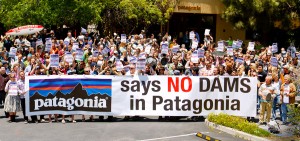 Times Square is about to get a little bit sunnier: starting today, a digital billboard will feature photographs of real New Yorkers calling for state lawmakers to make the Empire State a solar energy powerhouse by passing the New York Solar Jobs Act of 2011 (S.4178/A.5713). Legislators have until the session ends on June 20 to pass the bill and bring the many economic and environmental benefits of a strong solar industry to New York.“There’s no better place to show New York lawmakers, and the world, that solar is ready for primetime than iconic Times Square,” said Shaun Chapman, Director of East Coast Campaigns for Vote Solar. “We have the power to create tens of thousands of jobs in New York, boost the state’s economy with billions in increased wages and revenue, and help clean up its air – all with solar energy,” said Pierre Bull, Energy Policy Analyst at the Natural Resources Defense Council. “New Yorkers want the jobs, economic, and health benefits that solar power can deliver. With New Jersey currently number two nationwide in solar energy, there’s no reason the Empire State can’t give them a run for their money. ”
Times Square is about to get a little bit sunnier: starting today, a digital billboard will feature photographs of real New Yorkers calling for state lawmakers to make the Empire State a solar energy powerhouse by passing the New York Solar Jobs Act of 2011 (S.4178/A.5713). Legislators have until the session ends on June 20 to pass the bill and bring the many economic and environmental benefits of a strong solar industry to New York.“There’s no better place to show New York lawmakers, and the world, that solar is ready for primetime than iconic Times Square,” said Shaun Chapman, Director of East Coast Campaigns for Vote Solar. “We have the power to create tens of thousands of jobs in New York, boost the state’s economy with billions in increased wages and revenue, and help clean up its air – all with solar energy,” said Pierre Bull, Energy Policy Analyst at the Natural Resources Defense Council. “New Yorkers want the jobs, economic, and health benefits that solar power can deliver. With New Jersey currently number two nationwide in solar energy, there’s no reason the Empire State can’t give them a run for their money. ”
The featured New Yorkers are winners of the Empire State Solar Generation Photo Contest. The contest was led by Vote Solar and the Natural Resources Defense Council with participation from a coalition of grassroots organizations to demonstrate public support for the New York Solar Jobs Act. The groups used social media and other online outreach tools to encourage New Yorkers to submit photos showing their support for solar energy in the state. The contest drew entries from across the state, from Long Island to Lake George. Pictures featured solar businesses, customers and fans posing in front of panels, holding signs and finding other ways to illustrate New York’s solar potential. In addition to the photos, the broader grassroots campaign elicited more than 10,000 emails and 31,500 letters to lawmakers in support of the New York Solar Jobs Act.
The New York Solar Jobs Act would build a robust, competitive new solar energy marketplace in New York by requiring the state’s electricity providers to obtain an increasing portion of their electricity from solar power until they achieve 3% in 2025. The bi-partisan legislation is sponsored by Assemblymember Steven Englebright (D-Setauket) and Senator George Maziarz (R-C, Newfane). In addition to other benefits the bill would develop 5,000 MW of solar photovoltaics in New York by 2025, which would provide enough safe, reliable renewable electricity to power 500,000 average households.












